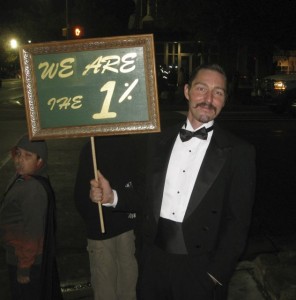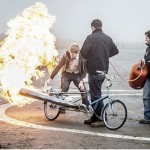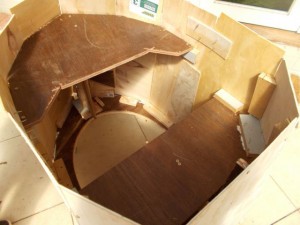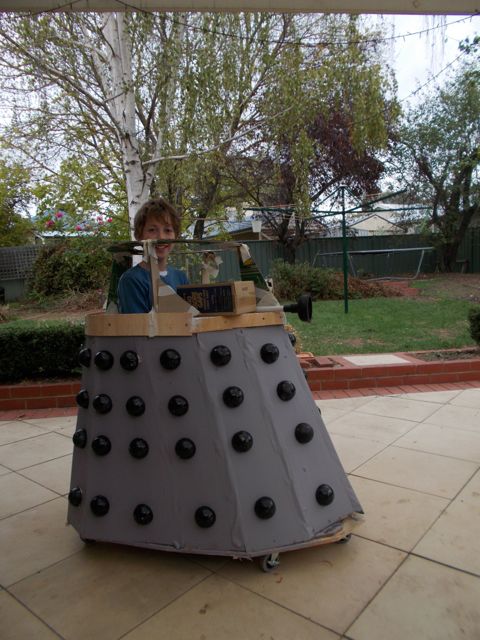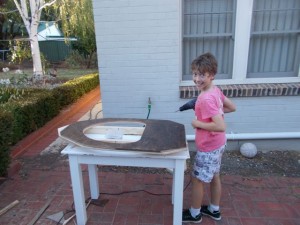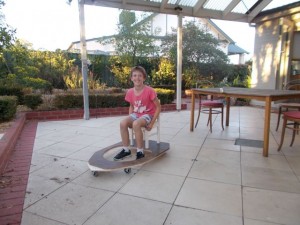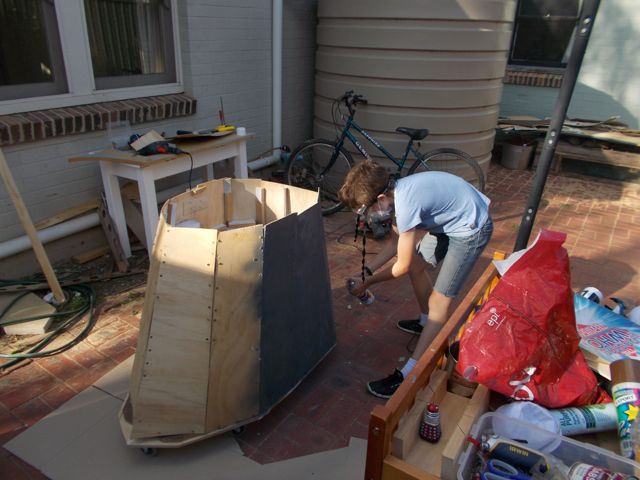After reading yesterday’s post by Mike Carlton our reclusive Quantum Dumpster pointed us in this direction for a differing and wider perspective on the demise of NSW Premier Barry O’Farrell. It is from InsideStory and written by Norman Abjorensen (see foot of article) Next week we will examine some state politics in the USA.
POLITICS these days is not only big business, but also smart business. The age of the street-corner soapbox, town hall meeting and leaflet letterboxing has long given way to the slick sophistication of opinion polling, focus groups, clinically tested and targeted messages, and deft use of social media. But not far beneath this glittering veneer of high-tech gimmickry is the real political dynamic of old that has never changed – a raw and visceral tribalism that predates all but the most basic technology.
Political tribalism is not new to Australia, a place known worldwide for its rough-and-tumble political brawling and free-for-all style, and nowhere is political tribalism more evident than in the senior colony, New South Wales, where it came ashore with the cargo of riff-raff and others in 1788. Politics has always been played hardest in New South Wales, the scene of Australia’s only military coup, back in 1808; Barry O’Farrell is merely its latest casualty.
Nowhere has the Labor Party, never known for its aversion to a stoush, turned on its own with such ferocity as during the years of Jack Lang’s NSW premiership in the 1930s, a cataclysm even more bitter than the party split of the mid 1950s. While the latter event topped a state government or two and kept the party out of office federally for a couple of decades, the events of 1932 onwards saw the heart ripped out of the federal Scullin government, Labor banished from office in New South Wales, and the creation of a rival party, quite unelectable, which continued to sow seeds of discord long after the Lang and Scullin governments had passed into history. Even after NSW leader William McKell eased a reformed and revitalised Labor Party back into office in 1941, Jack Lang, as tribal as they come, had not spent his hatred. Arriving in Canberra as an independent in 1946, he deployed his energies at every opportunity to harass the party that had abandoned him – especially Ben Chifley, who had led the fight against the Lang forces. Lang never forgave, but the party did eventually, readmitting him before his death in 1975.
Labor’s tribal wars in New South Wales these days are different, but no less intense. The machinations of the factions and their leaders – the Obeids, the Tripodis and their ilk – revealed in a series of inquiries by the Independent Commission Against Corruption, or ICAC, are turf wars almost as deadly as any mob skirmish in 1930s Chicago. Mates and lackeys are looked after, protected and favoured; opponents are ruthlessly eliminated, even when they appear to be powerful figures, such as a state premier. And the Liberals play the game in exactly the same way, as though this is part of the state’s DNA.
The NSW Liberal Party is a curious beast in its own right, as cantankerous and riven as its risible counterpart in South Australia, but far more influential because of its size and far more capable of causing damage, both to itself and to anyone or anything in proximity. Its path of evolution has differed from that of the party elsewhere. In Victoria, for instance, the Liberal Party is the establishment; it has held power more often than not. Its web of patronage is both extensive and deep; the names of old families and old money, like Baillieu and Napthine, sit seamlessly in the fabric of political life. This was the home of Victorian radicalism, where middle-class liberals like Alfred Deakin thought long and hard about social issues, and brought about far-reaching reforms such as factory legislation that eliminated sweatshops, and introduced the world’s first minimum wage back in 1896. An integral part of the overall social package was tariff protection, which gave benefits to manufacturer and worker alike.
New South Wales was different. The pastoral ascendancy had set the economy off on a different trajectory, that of free trade, and political and social development took a different course. Indeed, so divergent were the respective dominant ideologies that they threatened to derail the process of federation. Liberals in Victoria looked to a constituency of both working- and middle-class interests, but in New South Wales it was the nascent Labor Party, rising from the bitter strikes and depression of the early 1890s, that began to gather strength among the working class. Labor was much slower in gaining a foothold in Victoria.
With the effective two-party system in place from 1909, the demographics of New South Wales heavily favoured the Labor Party, which first assumed office in 1910, losing it in the split of 1916 only to regain it 1920–22, 1925–27 and 1930–32, when Lang’s handiwork saw it banished. The McKell revival in 1941 saw Labor in office for an unbroken twenty-four years, and again for long spells in 1976–88 and most recently 1995–2011. The situation in Victoria is almost the reverse, with Labor enjoying only brief periods in office until 1982–92 and 1999–2010. Just as the Labor Party dominated in New South Wales for an era, so too did the Liberals in Victoria from 1955 to 1982, twenty-seven unbroken years.
THESE sharp differences in opportunities to exercise political power and build the networks of patronage that go with it account for discernible variations in the character of conservative politics in the two larger states: an establishment in Melbourne, well-entrenched and confident, contrasts with an outgroup in Sydney, resentful and opportunistic. James Jupp observed almost thirty years ago that the NSW Liberals had “a right-wing ratbag character” and an “oppositional mentality” that was absent in Victoria. The ever-present danger, he wrote, was that without strong leadership coupled with the prospect of electoral success “instability in leadership and severe factionalism” would inevitably result.
Only three NSW Liberals have led the party to victory from opposition in eighty years – Bob Askin (1965), Nick Greiner (1988) and Barry O’Farrell (2011). All three came to the leadership after tribal warfare had felled a series of leaders in quick succession. Both Askin and Greiner offered what the party desperately needed – strong leadership coupled with the likelihood of imminent electoral success. Barry O’Farrell’s case is different: he came to office as an uneasy compromise and the Labor government imploded with no help from him.
In a sense, O’Farrell never dampened the tribal fires in the way that Greiner and Askin had and, while he might well have been the architect of his own downfall, he had never really been secure. To appreciate this it is necessary to understand the complex network of tribal allegiances that make up the NSW Liberal Party, and which have now become part of the fabric of the federal party.
John Howard was a typical product of the NSW Liberals. Growing up in a small business environment in suburban Sydney, he saw Labor everywhere: it had influence not just in the NSW government, which it ran with the trade unions, but also in local government, the churches, the legal profession, the judiciary and business. Labor was the ubiquitous enemy and had to be defeated and stopped; it was not just a political opponent, its very culture was toxic and had to be eliminated from the body politic and public life in general. Labor, in Howard’s view, looked after its own, and his side would do the same. It is a telling insight into the NSW Liberal mind that of almost 3000 members polled in a survey this year by Denise Jepsen of Macquarie University’s Faculty of Business and Economics, 89 per cent strongly agreed that among their reasons for joining the party was a desire to “to keep Labor out” (compared with 55 per cent wishing “to help local candidates,” for example.)
In a tribal sense, keeping Labor out means not resembling Labor in any way (a constant criticism the party’s right wing has of its moderates). The factions are tribal in a very real sense: you are either in or out. The basic argument, little changed down the years, is that the moderates accuse the right of making the party unelectable because they make it harder to win over “soft” Labor voters, a view that many on the right, in its various sub-tribes, see as akin to apostasy. The pragmatists on the right, however, see the logic in that argument and are prepared to tolerate a leader of moderate inclinations under certain circumstances. O’Farrell, though formally unaligned, was tolerated in precisely this way.
The moderates are broadly, though not entirely, homogenous, while the right is divided on a number of issues and with marked tensions between social conservatives, committed Christians and social libertarians. Across these divisions, the forces of the right are further split into three distinct sub-groups which, for want of a better label, comprise a soft right, centre right and hard right, the last dubbed “the Taliban” by the moderates and largely taking over from what were once known as “the Uglies.” Their activities in branch recruitment and preselection contests are seen as more organised and focused than those of the moderates, which gives them a disproportionate say in party matters.
The right, divided as it is, seldom agrees among itself, but the abrupt resignation of O’Farrell on 16 April saw just how swiftly it can mobilise as a tribe. Transport minister Gladys Berejiklian, perhaps the government’s ablest performer, was the choice of the moderates and O’Farrell’s preferred successor, but the right came out as one to block her path. Unlike Mike Baird, she had been an active factional warrior for the moderates since her Young Liberal days twenty years ago, and had to be stopped.
Once the writing was on the wall, O’Farrell initially planned to resign after Easter, giving Berejiklian time to build her numbers. The right moved to ensure a decision was made immediately and, while not having enough support for a candidate of their own – with ageing minister Andrew Constance and energy minister Anthony Roberts touted as possible candidates if a ballot were to be held – they were happy to throw their weight behind Baird. And they got their man, who now has some political debts. Berejiklian ended up as deputy leader, much to the chagrin of the right. A quirk in the party rules allows only lower house members to vote for the deputy, not the combined upper and lower house members who elect the leader. This weakened the right’s position, but given the storms ahead, in ICAC and elsewhere, Berejiklian might have her day yet, factional opposition notwithstanding.
Just who helped in O’Farrell’s demise is yet to be revealed, and it is unlikely he acted alone in destroying his premiership. The factions, especially the right, have become skilled assassins, and the ugly story of John Brogden’s political demise in 2005 attests to the lengths to which the tribes will go to destroy an enemy.
I was bemused when, back in 2011, just a few weeks before the state election with the polls showing a looming train wreck for Labor, a right-wing powerbroker I was chatting to began talking up Mike Baird, who was identified with the moderates. Why, I asked?
“Well, if for some reason Barry trips or stumbles in two or three years time, Baird is the obvious successor,” came the reply. It was an interesting comment, with Baird’s committed Christianity ticking a box, as did his economic dryness and also a commitment to “family values” (read opposition to gay marriage). Perhaps it was a coincidence, but it does suggest a contingency plan may have always been in place. •
Norman Abjorensen is a Visiting Fellow in the Policy and Governance Program at the Crawford School of Public Policy at the ANU. He is the author of three books on the Liberal Party and its leaders.
– See more at: http://inside.org.au/more-than-a-fraction-too-much-faction/#sthash.uAoVAfz6.dpuf
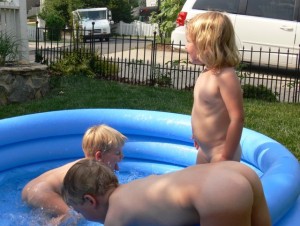 The charges were dismissed three months later when the judge determined that the video depicted innocent play. Still, the university suspended Hoffner for 20 days, reassigned him and ultimately fired him last May. The case went to an arbitrator.
The charges were dismissed three months later when the judge determined that the video depicted innocent play. Still, the university suspended Hoffner for 20 days, reassigned him and ultimately fired him last May. The case went to an arbitrator.
